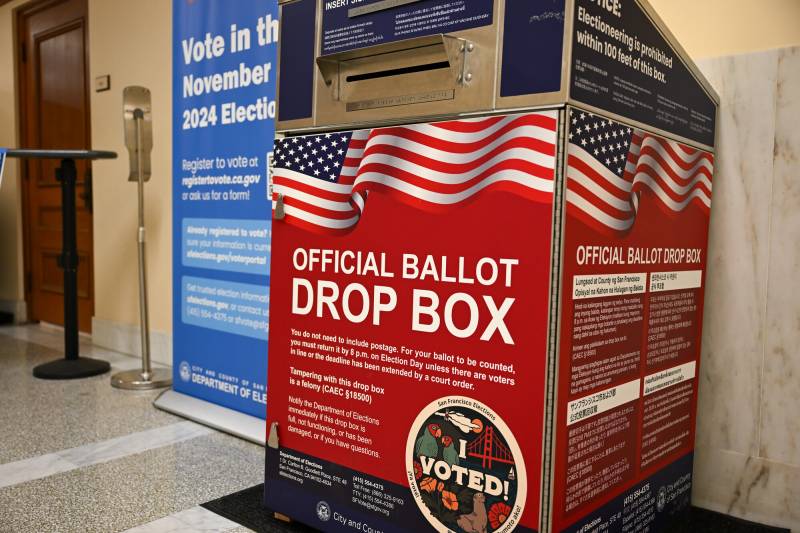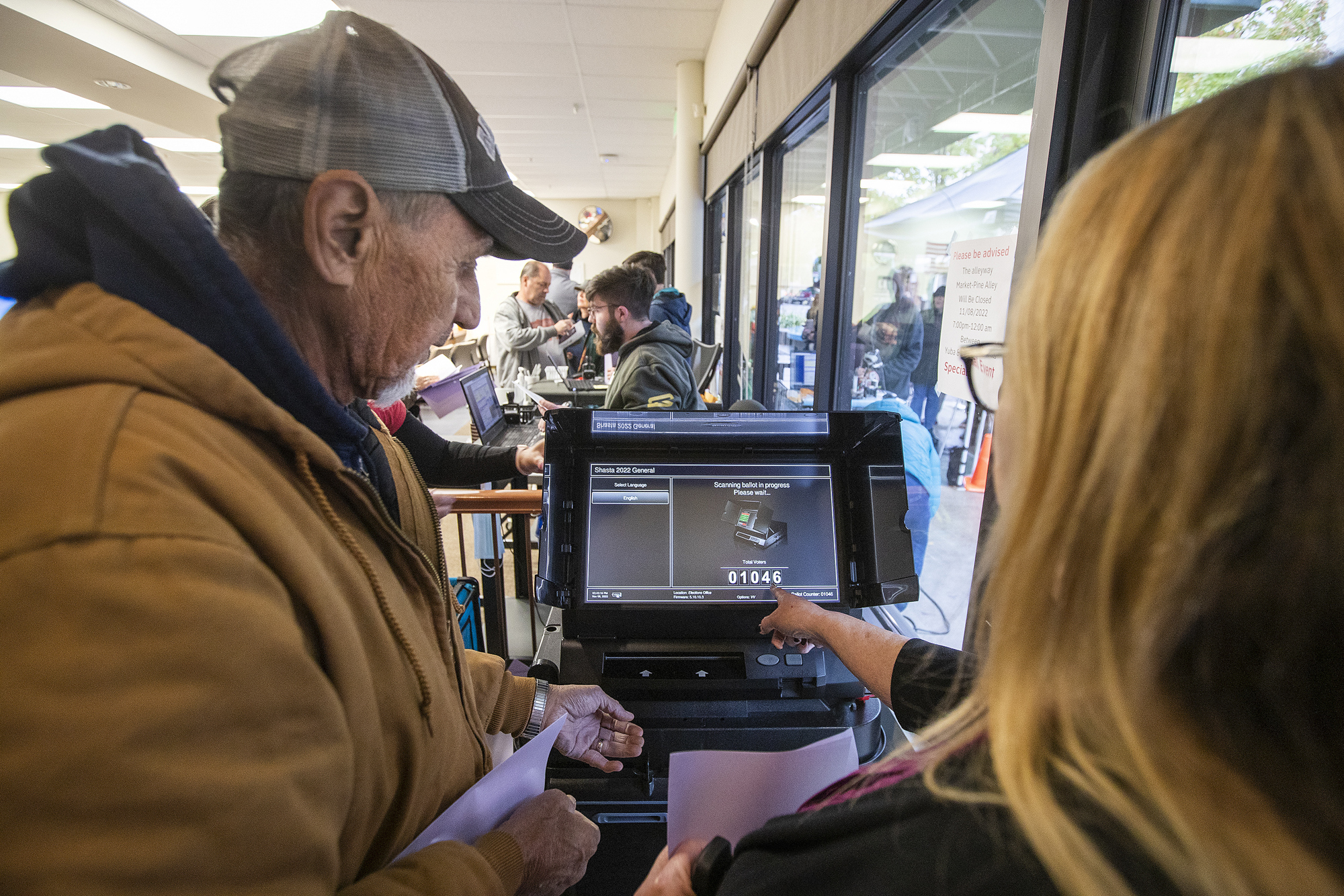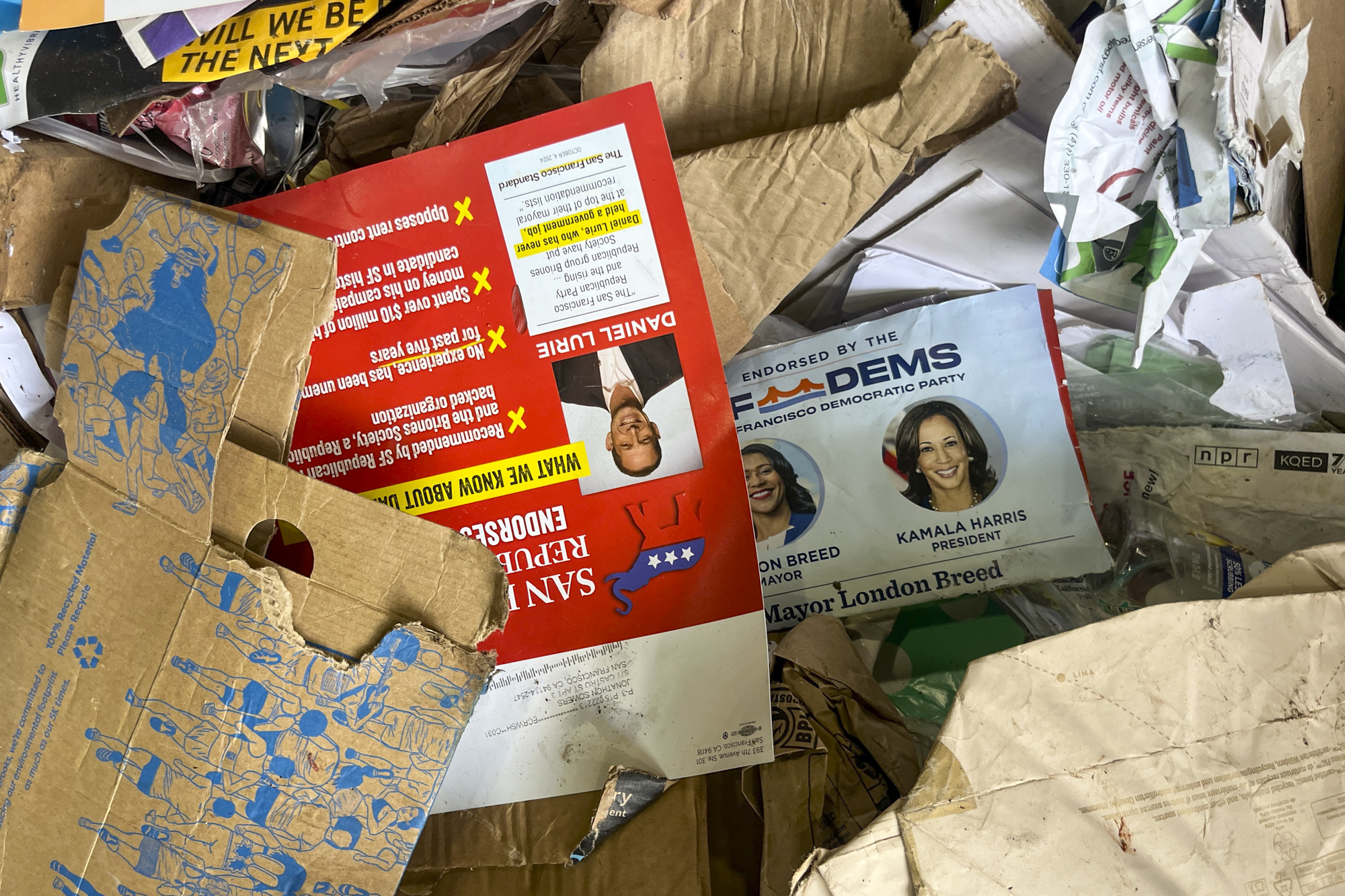Authorities believe the incidents are related. The New York Times has reported that at all three sites, devices placed outside the drop boxes had “Free Gaza” written on them, though investigators are trying to determine whether the suspect was a pro-Palestinian activist or using the phrase to sow division.
According to a September bulletin from the Department of Homeland Security, obtained by the watchdog group Property of the People, plans to destroy ballot drop boxes had been swirling on social media for about six months.
“Some social media users are discussing and encouraging various methods of sabotaging ballot drop boxes and avoiding detection, likely heightening the potential for targeting of this election infrastructure through the 2024 election cycle,” it reads.
The bulletin specifically said that people on forums frequented by “domestic violence extremists” discussed methods to destroy the boxes with petroleum fuel, road flares and fireworks.
“We knew going into this election that drop boxes were going to be an area of concern for security,” Moreles said.
California requires local elections officials to pick up ballots from boxes every other day in the 10 days before the election, but Santa Clara County has increased the frequency of pickups at its 109 drop-off locations to every day, and as Nov. 5 gets closer, Moreles said they will be picking up three to four times a day.
Elections workers have been instructed to inspect the boxes on pickup runs to make sure nothing has been tampered with and that all of their seals are in place, and local law enforcement agencies have been asked to increase patrols near the boxes when possible.
Lynda Roberts, Marin County’s chief election officer, said that the county is installing fire suppression equipment to its 26 drop box locations. It is also increasing patrols in the areas, and is closing ballot boxes at polling places overnight, though they have traditionally been accessible 24 hours a day.
The 14 drop boxes that are still open at all times are all in the vicinity of government and law enforcement agencies’ buildings.
Many Bay Area counties plan to activate their emergency operation centers to centralize communication with voting locations and law enforcement officials, Roberts said.
While Kristin Connelly, Contra Costa County’s registrar of voters, said she couldn’t comment on specifics, she said that the elections office had been in communication with local law enforcement and was doing “everything we can to keep a safe and secure election.”
Many registrars are telling voters to sign up for ballot tracking so that they can see when their ballot has been received.



